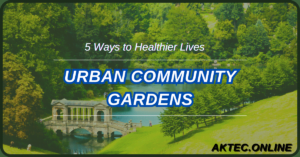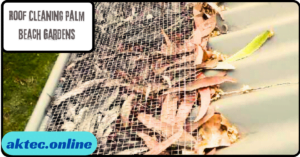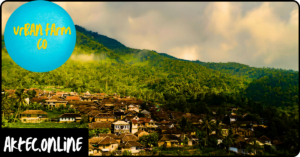
Escape the NYC bustle. Explore the Rockefeller Roof Gardens, a hidden oasis with stunning views and unique design
Introduction to Rockefeller Roof Gardens
History, Significance, and Design
Nestled amidst the towering skyscrapers of New York City’s Midtown Manhattan, the Rockefeller Roof Gardens offer a captivating oasis of tranquility and natural beauty. These hidden gems, perched atop the 7th floor of the Rockefeller Center complex, have been a cherished part of the city’s landscape since the 1930s.
A Legacy of Vision and Design
The Rockefeller Roof Gardens were envisioned by John R. Todd, the developer of Rockefeller Center, and architect Raymond Hood. Inspired by the Hanging Gardens of Babylon, they aimed to create a network of interconnected gardens accessible by pedestrian bridges. While this ambitious plan never came to fruition, the five distinct Rockefeller Roof Gardens that emerged stand as a testament to their vision.
A Walk Through Time
The Evolution of the Rockefeller Roof Gardens
Construction of the Rockefeller Roof Gardens began in 1932 alongside the Rockefeller Center complex. Landscaped by Ralph Hancock, the gardens were intended to offer a refuge from the bustling city streets and provide a connection to nature for office workers and visitors.
Originally envisioned as a series of interconnected spaces, budgetary constraints limited the project to five distinct gardens, each with its own unique character.
The Channel Garden
This serene space features a meandering stream with cascading waterfalls, creating a tranquil atmosphere amidst the urban landscape.
The Roof Garden
Lush greenery and vibrant seasonal flowers dominate this central garden, offering a burst of color and a sense of renewal throughout the year.
A Symphony of Plants and Landscapes
Each Rockefeller Roof Gardens boasts a unique design and character, reflecting the diverse plant life they harbor. Here’s a closer look at some of the gardens:
The 620 Loft & Garden
This expansive space features a lush green landscape with a central lawn, mature trees, and a variety of flowering plants. It offers a stunning backdrop for events and provides a haven for relaxation.
The Hidden Roof Garden
Tucked away on a secluded corner, this intimate space offers a sense of discovery. Filled with fragrant herbs and flowering plants, it’s a haven for tranquility and a popular spot for quiet contemplation.
The Sunken Plaza
This geometrically designed garden features towering trees, cascading ivy, and a central reflecting pool. Its grand scale and structured layout provide a sense of awe and grandeur.
Beyond Aesthetics: The Ecological Impact of Rockefeller Roof Gardens
The Rockefeller Roof Gardens play a crucial role in promoting sustainability and biodiversity within the urban environment. Here’s how they contribute:
Urban Oasis for Pollinators
The gardens provide a vital habitat for bees, butterflies, and other pollinators, which are essential for a healthy ecosystem. The diverse selection of flowering plants attracts these vital insects, encouraging them to thrive amidst the urban sprawl.
Green Infrastructure
The Rockefeller Roof Gardens contribute to the city’s overall green infrastructure. These rooftop havens help to regulate air temperature, mitigate the urban heat island effect, and improve air quality by absorbing pollutants.
Sustainable Practices
The gardens showcase sustainable landscaping practices, such as rainwater harvesting and efficient irrigation systems. This reduces reliance on traditional water sources and promotes environmental responsibility.
A Visitor’s Delight and Economic Catalyst
While originally intended as a refuge for office workers, the Rockefeller Roof Gardens have become a popular destination for both locals and tourists. Here’s how they contribute to the city’s vibrancy:
Unique Perspective
The gardens offer a unique perspective of the iconic New York City skyline, combining breathtaking cityscapes with tranquil green spaces.
Guided Tours
Visitors can embark on guided tours to learn about the history, design, and ecological significance of the Rockefeller Roof Gardens. These tours provide insights into the hidden gems nestled atop Rockefeller Center.
Events and Weddings
The gardens serve as a venue for various events, from corporate gatherings to intimate weddings. This not only adds to the vibrancy of the space but also contributes to the local economy.
A Glimpse into the Future
The Legacy of Rockefeller Roof Gardens
The Rockefeller Roof Gardens stand as a testament to the power of nature to transform urban spaces. They serve as a sanctuary of beauty, a reminder of the importance of sustainability in our cities, and a source of inspiration for future generations.
As we continue to grapple with the challenges of urbanization, the Rockefeller Roof Gardens offer a glimpse into a future where nature and urban development coexist harmoniously. Here’s how their legacy continues to inspire:
Urban Design Inspiration
The success of the Rockefeller Roof Gardens has inspired similar projects around the world
Urban Design Inspiration
The success of the Rockefeller Roof Gardens has inspired similar projects around the world, with architects and developers incorporating green spaces into high-rise buildings. This trend promotes a more sustainable and livable urban environment.
Public Appreciation for Green Spaces
The popularity of the Rockefeller Roof Gardens highlights the public’s growing appreciation for green spaces within urban environments. These gardens provide a much-needed escape from the concrete jungle and offer a connection to nature, promoting well-being and fostering a sense of community.
A Model for Sustainability
The Rockefeller Roof Gardens serve as a model for sustainable urban development. Their commitment to water conservation, efficient irrigation, and habitat creation showcases how green spaces can be integrated into urban landscapes while minimizing environmental impact.
Exploring the Hidden Gems
Accessing the Rockefeller Roof Gardens
Unlike most public parks, the Rockefeller Roof Gardens are not readily accessible to the general public. However, there are a few ways to experience these hidden gems:
VIP Tours
The Rockefeller Center offers VIP experiences that include exclusive access to one of the Rockefeller Roof Gardens. These tours provide a unique opportunity to explore the gardens and learn about their history and significance.
Seasonal Events
Occasionally, the Rockefeller Roof Gardens are opened to the public for special events. Following Rockefeller Center’s social media channels or website can help you stay informed about these rare opportunities.
Admiration from Below
While you might not be able to walk through them, the three gardens facing Fifth Avenue can be partially glimpsed from the sidewalk below. The vibrant colors and lush greenery offer a tantalizing glimpse into the hidden oasis above.
A Call to Action
Preserving and Expanding Urban Green Spaces
The Rockefeller Roof Gardens serve as a powerful reminder of the importance of preserving and expanding green spaces within our cities. Here’s how you can contribute:
Support Organizations
Advocate for organizations dedicated to creating and maintaining urban green spaces. These organizations play a crucial role in promoting green infrastructure and ensuring access to nature for all city dwellers.
Embrace Green Living
Explore ways to incorporate greenery into your own urban environment. Consider container gardens on balconies, rooftop gardening projects, or supporting local community gardens. Every bit of green contributes to a more sustainable and vibrant city.
Spread Awareness
Share the story of the Rockefeller Roof Gardens with your friends and family. By raising awareness about the benefits of urban green spaces, you can inspire others to advocate for their preservation and expansion.
The Rockefeller Roof Gardens offer a captivating glimpse into a world where nature thrives amidst the urban landscape. These hidden gems serve as a testament to human ingenuity and a call to action for a more sustainable future.
By learning from their legacy and embracing green living, we can create cities that are not only functional but also beautiful, healthy, and in harmony with nature.
Beyond Rockefeller Center

Unveiling Other NYC Rooftop Gems
While the Rockefeller Roof Gardens hold a special place in New York City’s green oasis collection, they’re not the only rooftop havens waiting to be discovered. Here’s a glimpse into some other captivating rooftop escapes:
Public Rooftop Gardens
The High Line
This elevated park, built on a historic freight rail line, offers stunning views of the city and a variety of plants and flowers.
Brooklyn Bridge Park
This waterfront park boasts a rooftop section with panoramic views of the Brooklyn Bridge and the Manhattan skyline.
MoMA PS1
This contemporary art museum features a rooftop garden with sculptures, installations, and a vibrant community space.
Hotel Rooftop Bars
230 Fifth
Perched atop the Kimpton Ink4 Hotel, this rooftop bar offers breathtaking views of the Empire State Building and a sophisticated atmosphere.
The Roof at Public
This stylish rooftop bar at the Public Hotel provides panoramic views of Central Park and the cityscape.
Mr. C Seaport
This rooftop bar boasts stunning views of the Brooklyn Bridge and the East River, creating a perfect setting for cocktails and conversation.
Exploring these diverse rooftop spaces allows you to experience the city from a new perspective. Each offers a unique blend of nature, architecture, and urban energy, catering to various preferences. Whether you seek a tranquil garden escape or a vibrant social scene, New York City’s rooftop havens have something to offer everyone.
Conclusion
The Rockefeller Roof Gardens stand as a testament to the transformative power of nature and a beacon of inspiration for sustainable urban development. By exploring these hidden gems and venturing into other rooftop havens, we can appreciate the diverse ways nature flourishes within the concrete jungle.
These green spaces not only enhance the city’s aesthetics but also contribute to our well-being and remind us of the importance of fostering a harmonious relationship between humanity and the natural world.
FAQs
What are the Rockefeller Roof Gardens?
The Rockefeller Roof Gardens are a collection of five unique gardens perched atop the 7th floor of Rockefeller Center in Midtown Manhattan, New York City.
What is the history behind the Rockefeller Roof Gardens?
Envisioned in the 1930s by John D. Todd and architect Raymond Hood, the gardens were originally planned as a network of interconnected spaces. While budgetary constraints limited the project, the five distinct gardens that emerged remain a testament to their vision.
Can I visit the Rockefeller Roof Gardens?
Public access to the Rockefeller Roof Gardens is generally limited. However, there are a few ways to experience these hidden gems:
VIP Tours: Rockefeller Center offers VIP experiences that include exclusive access to one of the gardens.
Seasonal Events: Occasionally, the gardens are opened to the public for special events.
Admiration from Below: The three gardens facing Fifth Avenue can be partially glimpsed from the sidewalk below.
What is the significance of the Rockefeller Roof Gardens?
The Rockefeller Roof Gardens hold significance for several reasons:
Urban Oasis: They provide a much-needed escape from the concrete jungle and offer a connection to nature within a densely populated city.
Sustainability Model: They showcase sustainable practices like water conservation and habitat creation, inspiring future urban development.
Public Appreciation for Green Spaces: Their popularity highlights the public’s growing desire for green spaces within urban environments.
Are there other rooftop spaces I can visit in NYC?
Absolutely. New York City boasts a variety of captivating rooftop experiences, including public rooftop gardens, hotel rooftop bars, and rooftop restaurants. Some popular options include The High Line, Brooklyn Bridge Park, MoMA PS1 rooftop garden, 230 Fifth rooftop bar, The Roof at Public, and Mr. C Seaport rooftop bar.
How can I contribute to preserving and expanding urban green spaces?
Support organizations dedicated to creating and maintaining urban green spaces.
Embrace green living by incorporating greenery into your own urban environment.
Spread awareness about the benefits of urban green spaces and advocate for their preservation and expansion.









